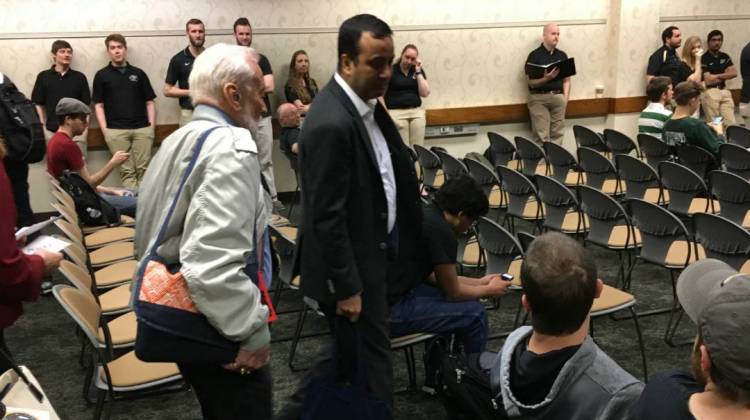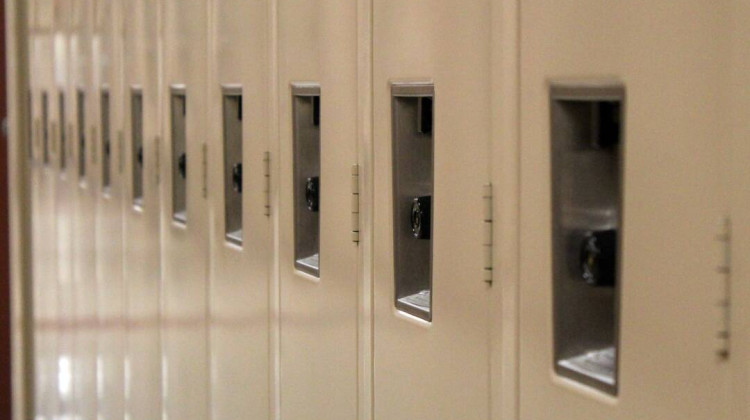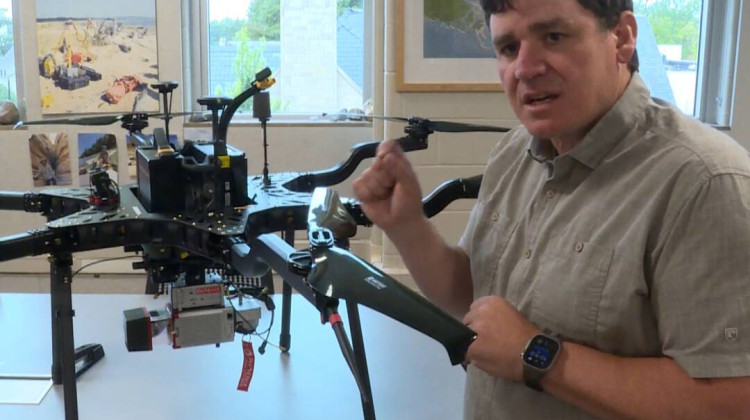
Former astronaut Buzz Aldrin (left) served as the "customer" for a group of Purdue students trying to determine what it'll cost to send a million humans to Mars in the next century.
Stan Jastrzebski/WBAAPurdue University students trying to validate a plan from entrepreneur Elon Musk say Musk’s idea to send a million people to Mars over the next century likely won’t work out.
The astronomical and aeronautical engineering students announced their findings Tuesday to former astronaut Buzz Aldrin and his son Andrew, who’d served as “customers” for the project.
Musk had suggested it was possible to lower the per-person cost of getting to the Red Planet to $200,000. But using Musk’s many assumptions, the students find that even a heavily subsidized effort would cost nearly an extra trillion dollars over the next 100 years.
Moreover, Buzz Aldrin says it’s dangerous to set an arbitrary cost for travelers on which to base such a project – when it’s still not clear any of Musk’s math works.
“You’re starting with a big number and setting up a big city. Now how you got there is very important," Aldrin says. "It’s not how to do you that once it’s all mature. I mean, how do you build the skyscrapers on Manhattan? Well, somebody had to buy the island from the Indians.”
Aldrin says it’s likely going to take someone with Musk’s enormous financial resources to fund a workable plan. And there’s an even bigger hurdle: garnering enough public support to force lawmakers to increase spending on space.
“Maybe 40 years ago, somebody in the back room said ‘well, how are you going to pick these people to go up in the shuttle?’ And somebody said ‘well, why don’t you have a lottery?’ It’s not to make money, it’s to increase the support,” Aldrin says.
Aldrin says NASA funding amounted to 3-4 percent of the federal budget during the United States' space race with the Soviet Union – back when he went to the moon. It’s only one-half-of-one-percent of federal spending today.
 DONATE
DONATE






 Support WFYI. We can't do it without you.
Support WFYI. We can't do it without you.